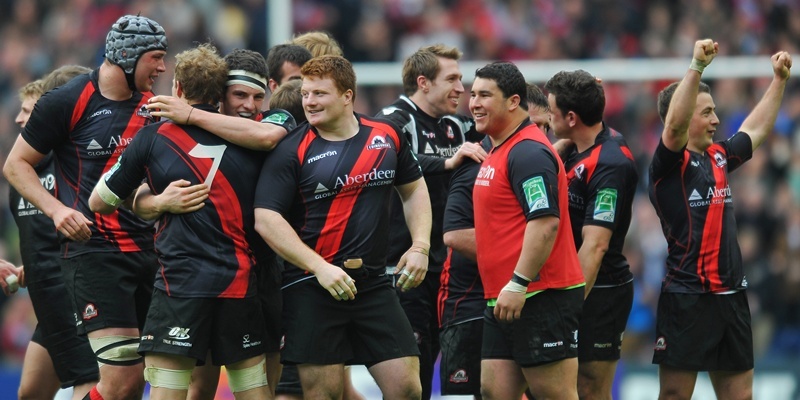It’s taken 17 years of mismanagement and enduring one of the most depressing periods in the national team’s recent history, but professional rugby in Scotland may have reached its tipping point with Edinburgh’s epic 19-14 Heineken Cup quarter-final victory over Toulouse.
A crowd of almost 38,000 roared itself hoarse at Murrayfield and swept Michael Bradley’s team to the greatest-ever victory in the Scottish club game, and one that could relaunch, even after a decade and a half, a successful concept of pro rugby in this country. Saturday showed clearly, after several false dawns, that this could actually work.
The capital club, with a meagre budget of around £5 million and only really boosted to that level after this season had already started, defeated the mighty four-time European champions with their £30 million-a-year war chest.
The team second bottom of the Rabo-direct PRO12 beat the leaders of the French Top 14, the biggest and best league in the world. Imagine Dunfermline beating Real Madrid, and you might get close to what kind of upset this was.
But it was never remotely a fluke. During the second half, where Edinburgh gradually clawed their way back into the game and ahead after two yellow cards had seen them lose their grip before half-time, the great Toulouse with all their weaponry, masses of caps and their lucrative imports, did not have a single possession inside the Edinburgh 22 this against a side who were supposed to have a suspect defence.
It’s tempting, as the Edinburgh staff and players do, simply to draw a direct line between their performances and that of the Glasgow Warriors, headed for the playoffs in the PRO12 and those of the national side as being irrelevant to one another. But really, you can’t. There were nine Edinburgh players on the pitch on Saturday who played in the hapless Six Nations campaign, and the difference between them on Saturday, inspired and almost reckless in putting their bodies on the line, compared to the haunted individuals we saw in Rome three weeks ago was just astounding.
Ross Ford, burdened by captaincy of a losing Scotland team, seemed to be spent for the season at the end of the championship, but he looked like the best ball-carrying hooker in Europe again on Saturday.
Lee Jones, frighteningly mis-matched at times physically for Scotland, took down bigger men with unerring efficiency and without fear.
Greig Laidlaw, not even trusted to kick from hand in Rome, directed operations with the boot with superlative aplomb.
The non-internationalists Tom Brown, Tim Visser, Matt Scott, Sean Cox and Grant Gilchrist were all outstanding, but they can’t make this much of a difference. You have to put it down to the way that Bradley, assistant Tom Smith and their staff prepare Edinburgh for these European matches.
Off the field might be where the true benefit of this fabulous win, which sends Edinburgh to a semi-final in Dublin on April 28, is felt.
Freed from the penny-pinching of the past Murrayfield regime, Edinburgh chief executive Craig Docherty and team pulled out all the stops to make Saturday the biggest day in Scottish domestic rugby. Thirty-eight thousand-plus is unprecedented for a Scottish club game and showed the value of promoting the brand.
Under former SRU chief Gordon McKie’s watch, when marketing was frowned on as spendthrift and the pro teams as necessary if unwelcome burdens on the SRU’s balances, they couldn’t get that many for a Scotland match against the World Champion Springboks.
Even if only a third of them come back regularly, that would more than double Edinburgh’s average home crowd.
So many attendance records have been smashed this season by both pro teams that it’s obvious the will to back the clubs is there.
The fans want to see consistently successful teams, yes, but they understand that effort like Saturday’s from the club and the team is worthy of their backing.
It’s taken too long, and there are still those so offended by the concept that they will never darken the door of the pro teams.
But the club game feeds the professional arena all but two of the starters on Saturday came from domestic clubs and there’s a feeling that they have finally gained acceptance at last.
Photos by Mark Runnacles/PA Wire
